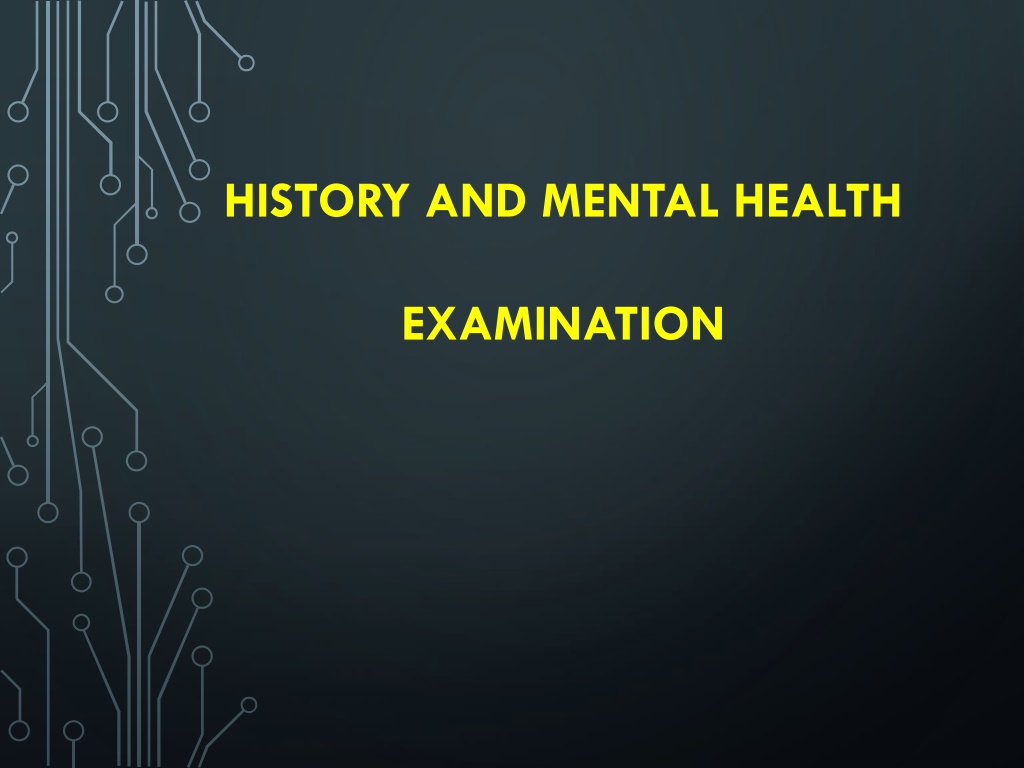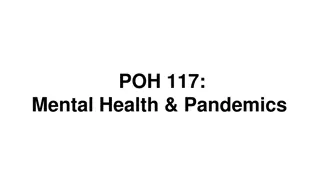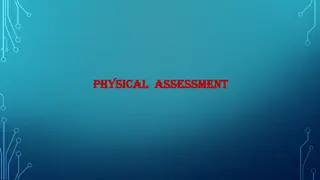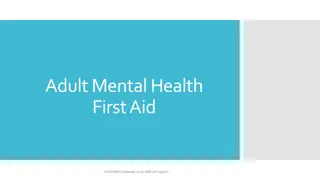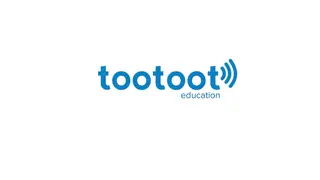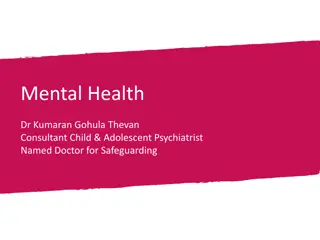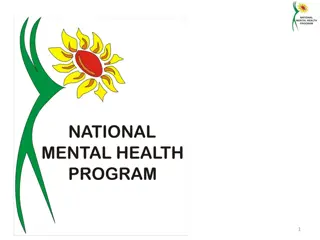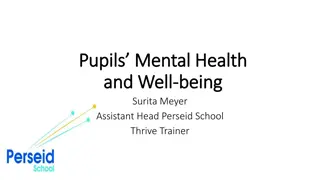Understanding History and Mental Health Examination
Conducting a thorough history and mental health examination is crucial in assessing individuals' well-being. This process involves collecting data, analyzing information, setting goals, creating care plans, implementing interventions, and evaluating outcomes. Clinical interviews, client assessments, and mental state examinations play key roles in this comprehensive assessment process, helping professionals gather essential information, establish therapeutic relationships, and make psychiatric diagnoses. Developing skills like active listening, reflection, paraphrasing, summarizing, clarification, confrontation, probing, and rapport are essential in conducting successful clinical interviews. Through these methods, mental health professionals aim to provide effective care and support to individuals in need.
- Mental Health Examination
- Clinical Interview
- Client Assessment
- Mental State Examination
- Psychiatric Diagnosis
Download Presentation

Please find below an Image/Link to download the presentation.
The content on the website is provided AS IS for your information and personal use only. It may not be sold, licensed, or shared on other websites without obtaining consent from the author. Download presentation by click this link. If you encounter any issues during the download, it is possible that the publisher has removed the file from their server.
E N D
Presentation Transcript
HISTORY AND MENTAL HEALTH EXAMINATION
history & Mental Health Assessment (1) Assessment: Data collection (Mental& physical background to understand the history of the disorder) (2) Data Analysis: Nursing Diagnosis (3) Goal setting: Outcome identification (4) Planning: Nursing Care Plan (5) Implementation: Interventions (6) Evaluation for The expected outcome
Client Assessment (History of the disorder): Collection of data about a person, family, or group by observing, examining, and interviewing. Data included area about the medical and mental health status of the client.
Clinical interview (historical analysis):- is a meeting between the client and professional mental health team. Purposes of clinical interview: Gathering information about the client and the history of the disorder. To establish a therapeutic relationship with the client. To conduct therapeutic intervention as counseling or psychotherapy
Clinical interview skills: Active listening: Psychiatric SW should be a good listener. Reflection: mirroring hidden painful feelings and thoughts Paraphrasing: to assure accuracy of client s words. Summarizing: to give positive feedback that all data provided by client was completely understood well.
Clinical interview skills: cont. Clarification: asking client to explain ambiguity. Confrontation: to direct the client towards his real problems Probing: to explore deep unconscious feelings and desires. Rapport: to convey complete attendance, empathy and willingness of PSW to help the client by verbal and nonverbal communication
Mental State Examination (MSE) An assessment tool of the brain functions that helps mental health professionals to reach a tentative psychiatric diagnosis. An experienced team member can complete all the components of (MSE)
Mental State Examination (MSE) include: 1.General appearance 2.Psychomotor Behaviour: 3.Attitude 4.Speech 5.Mood and affect 6.Perception 7.Thinking 8.Sensorium and cognition 9.Judgment 10.Insight 11.Reliability 12.Sexuality
(1) General appearance:- Involves important information that can be taken from the first sight objectively without asking the client A- Dress, grooming, &hygiene (self-care)- Good and suitable in healthy or mentally stable clients, delusional disorder, and most neurotic disorders. * Schizophrenia may have strange style of dressing. * Mania dressing is usually bright, multicolored, mismatched & excessive use of cosmetics.
B- Facial expression:- Anxious in anxiety, Sad in depression, euphoric or excited in mania, & apathetic in schizophrenia. C- Eye contact: Lost in shyness, schizophrenia & depression Irregular in anxiety Good in mania. D- Nutritional Status:- Weight gain or loss in depression.
(2) Psychomotor Behaviour: A- Hyperactivity:- Agitation, aggression or restlessness as in mania, schizophrenia and mental retardation. B- Hypoactivity:- Rigidity or retardation as in depression, catatonic schizophrenia or some forms of conversion disorder. C- Posture: how client sits, walks, and behaves. - Catatonic: Waxy flexibility, bizarre and maintained for a long time as in catatonia.
- Restless or agitated: as in mania. - Anxious: as in anxiety disorders. -Depressed: Leaning forward, looking at the ground, non responsive. D- Stereotypy: Repetitive fixed pattern of action & speech (schizophrenia & mental retardation. E- Bizarre behavior: unacceptable Culturally & socially as in schizophrenia. F- Mannerism: Involuntary, Unusual bizarre behavior, stylized movements. Clearly uncomfortable or inappropriate as rocking, nodding,
(3) Attitude:- Client's interaction with mental health team may be: A- Cooperative: in anxiety disorders B- Resistive: As in acute psychosis and personality disorders. C- Aggressive: As in mania and schizophrenia.
(4) Speech: A- Quantity:- Very less as in depression and catatonia. B- Quality:- -Monotonous, soft, & slow in depression. -Talkative, stereotyped, pressured & loud in mania -Incoherent in schizophrenia. - Stuttered and dysrhythmic in anxiety disorders. - Repetitious as in dementia & organic brain disorder.
(5) Mood and affect: A- Mood: Subjective emotional state reported by client. - Mood Variations involve: *Euthymic mood: Normal range(absence - elevated) *Dysphoric mood: Feeling unpleasant as in dysthymia. *Depressed mood: feeling of sadness as in depression.
*Irritable mood: Easily annoyed provoked to anger as in mania. * Euphoric mood: feeling of great happiness or excitement as in mania. * Anxious mood: feeling of fear of unknown, tension, and expecting the worst. * Mood swings: euphoria and depression as in bipolar disorder. * Anhedonia: Loss of interest in all pleasurable activities as in depression.
B: Affect: External expression of feelings as observed by others. * Appropriate affect: emotional tone is in harmony with the idea. * Inappropriate affect: Disharmony between the emotional tone and the idea. *Flat affect: Absence of any signs of affective expression as in schizophrenia. *Blunt affect: Severe reduction in the external feeling tone as in schizophrenia. * Labile affect: Rapid and sudden changes in the external emotional tone, unrelated to external stimuli as in senile dementia.
(6) Perception: Disturbances include: a. Hallucination: False sensory perception not associated with a real external stimuli. Types of hallucinations according to the affected sense: * Auditory: False perception of sound usually voice. * Visual: False perception of sight of people or flashes of light. *Olfactory: False perception in smell.
Gustatory: client taste something that is not present *Tactile: client senses that he is being touched when he is not. One of the most common complaints is the sensation of bugs crawling over the skin, and (phantom sign ) after amputation of limb. * General somatic hallucination: client experiences a feeling of their body being seriously hurt through mutilation such as snakes crawling into their stomach.
b. Illusions: Misperception or misinterpretation of real external stimuli. c. Depersonalization: Subjective sense of being unreal, strange or unfamiliar to oneself as in panic disorder. d. Derealization: Subjective sense that the environment is changed or unreal as in panic disorder.
7- Thinking: A- disturbance in the form of thought: * Neologism: New word created by the client, as in schizophrenia. *Word salad: Incoherent mixture of words (extreme neologism) as in schizophrenia. *Perseveration: repetition of the same word or idea in response to different questions as in dementia.
*Loosing of association: ideas shift from one subject to another in unrelated way as in schizophrenia. *Flights of ideas: Rapid constant shifting from one idea to another, ideas tend to be connected, some followed by listener as in mania. *Clang association: Association of words similar in sound not meaning as in mania. * Blocking: Abrupt interruption train of thinking before finishing the idea (depression and schizophrenia)
B: Disturbance in content of thought: 1.Delusion: False fixed belief, not consistent with client intelligence or cultural background. Different forms of delusion: -Bizarre delusion: Very strange false belief " e.g. Invaders from space have implanted electrodes in the client brain. -Delusion of control: " Thought insertion, withdrawal, broadcasting" - Nihilistic delusion: belief that self, others or the world is not existent.
- Delusion of poverty: belief of loss of all material possessions. - Somatic delusion: belief involving the functioning of one's body. e.g. belief that one's brain is melting". - Paranoid delusion 2.Obsession: Pathological persistent of an irresistible thought cannot eliminated from consciousness by logical efforts. 3. Phobia social phobia, hydro-phobia etc. Abstract thinking: The ability to deal with concepts. E.g. ability to explain similarity between orange and apple are fruit. Concrete thinking client says both orange and apple are round, as in schizophrenia and organic brain disease.
8 - Sensorium and cognition: A: Disturbance of orientation: Disorientation to time, person, and place. B: Disturbance in consciousness:- Somnolence: Abnormal drowsiness Stupor: Lack of reaction and awareness to the surroundings
C: Attention: Disturbances include: *Distractibility: Inability to concentrate attention, it is drawn to unimportant external stimuli as in anxiety and mania. *Selective inattention: Blocking out things generate anxiety as in malinger. *Hyper vigilance : Excessive attention as in post traumatic stress disorder and paranoid state
D- Memory: Ability to recall information. * Immediate memory: recall perceived objects within seconds. * Recent (short term) memory: recall events in the past few days. * Remote (long term) memory: recall of the events in the distant past. * Amnesia: Partial or total inability to recall past experiences may be organic or emotional as in PTSD
E: Intelligence: ability to understand, recall previous learning. Mental retardation is classified as:- Mild retardation: IQ from 50-70, educable in special classes. Moderate retardation: IQ from 40-50, trainable simple crafts. Severe retardation: IQ from 20-40, maintain activity of daily living. Profound retardation: IQ below 20 dependent, and institutionalized.
9 - Judgment: ability to assess and evaluate situation, make rational decision, and take responsibility for actions. A-Critical judgment: ability to assess situation and choose decision among different options. B: Automatic judgment: Reflex performance of action as in impulse control disorder. C: Impaired judgment: Diminished ability to understand a situation and act properly as in schizophrenia.
10 - Insight: client's awareness that he is mentally ill. A- Complete insight: client is aware that he has mental illness, and recognize the precipitating and relieving causes, and the importance of treatment program as in neurosis. B- Partial insight: client realize he has mental health problem, but explain it as a result of somatic or social cause, and not committed to his therapeutic program. C- Loss of insight: client completely deny that he has mental health problem. As in psychosis.
11- Reliability: The interviewer impression that the client give information accurately and completely. It is good in personality disorders and neurosis and impaired in psychosis Need to check the facts
12- Sexuality: Client may be impotent, hermaphrodite, may have lost a sexual partner, or may have been a victim of sexual abuse. Conclusion: Summarize the information obtained from the interview with the client and get an overview of the client's status professionally
